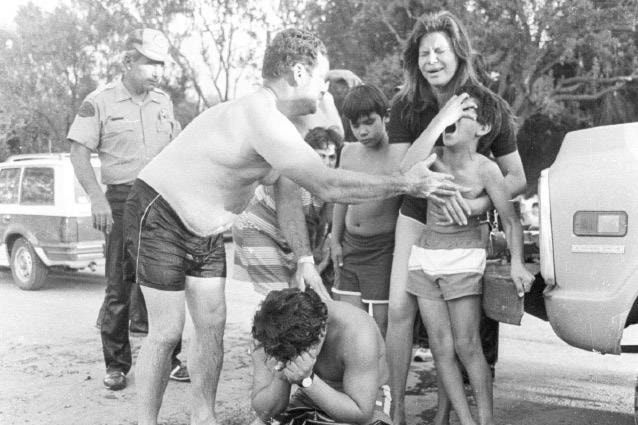I was on duty when the call went out of a possible drowning at Kal Lake Monday night.
More often then not, these calls turn out to be false alarms. Not this time.
I arrived just before 7 p.m. I spotted the police cars by their bright swirling lights. I made my way down the eastern dock to see what was happening.
I noticed several officers on the dock and two people kneeling next to them. I raised my smartphone to get a few photos without really thinking. The police noticed me shooting photos and immediately waved for me to get the heck out of there. When I put my phone down and had a closer look I realized why: There was a couple kneeling next to a body bag or tarp on the dock. The police were giving them space to grieve and work through their shock.
RELATED: Child dies in boating accident on Kal Lake
When I saw that image, it burned into my retinas. The man was stunned, barely moving, staring straight ahead. I looked away in shame. I felt like I was going to vomit. I quickly left the scene, feeling awful about what happened and my intrusion into the aftermath.
This was the most vulnerable, emotional moment a parent could experience, and I was there taking photos. Of course, I didn’t know at first what had transpired, but that changed nothing for the family or the officers on scene. We are trained as journalists to always get the photo/video and edit based on taste and ethics later. This was cold comfort.
I woke up with nightmares three times overnight. I couldn’t shake that image. I couldn’t reconcile the horror. I wondered why I even shot the photos.
By Tuesday morning, other online media had a version of the photo posted on their websites, with friends or family kneeling on the dock with the body, officers keeping watch.
I decided the photo was an invasion of privacy for several reasons, mainly that it involved a child and it was clear there was a body in the photo.
I also wondered about how it would serve our readers. Normally, the point is made that a graphic photo can serve as a cautionary tale about boat or water safety, but we didn’t know what actually happened at the time we first posted our story at 7 p.m. As it turned out, it was a tragic accident, and it made even less sense to use the photo.
Having worked in large newsrooms in bigger centres in Canada, I recall these discussions surrounding similar photos at accident or fire scenes. One photo in Edmonton of a firefighter passing an unconscious girl with smoke stains around her nose and mouth down a ladder to another firefighter ran on the web and in the paper and won a National Newspaper Award. I speculated Tuesday that there’s no way that photo could run in a smaller community newspaper or website.
The most famous instance of a graphic photo running in print to much backlash and debate was known as the Hart Park drowning photo. It depicts a family reacting in horror as a young son/brother is seen, dead in an open body bag. It divided the entire journalism community in 1985 and still sparks debates 30-something years later. Photographers generally felt it was right to run the photo, editors not.
I’m glad we decided not to run it. Either way, you should know we give these situations much thought and worry, and they stay with us forever.
John White is editor of the Vernon Morning Star, the Observer’s sister paper
To report a typo, email: newstips@vernonmorningstar.com.
Follow me on Twitter @johnkwhite
Email me john.white@vernonmorningstar.com
Like us on Facebook and follow us on Twitter
